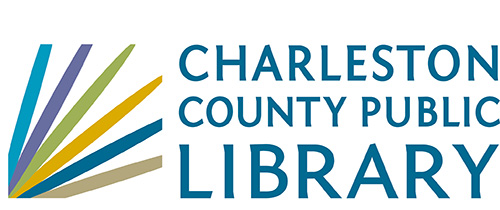Menu
×
John L. Dart Library
Closed
Phone: (843) 722-7550
West Ashley Library
Closed
Phone: (843) 766-6635
Folly Beach Library
Closed
Phone: (843) 588-2001
Edgar Allan Poe/Sullivan's Island Library
Closed for renovations
Phone: (843) 883-3914
Wando Mount Pleasant Library
Closed
Phone: (843) 805-6888
Village Library
Closed
Phone: (843) 884-9741
St. Paul's/Hollywood Library
Closed
Phone: (843) 889-3300
Otranto Road Library
Closed
Phone: (843) 572-4094
Mt. Pleasant Library
Closed
Phone: (843) 849-6161
McClellanville Library
Closed
Phone: (843) 887-3699
Keith Summey North Charleston Library
Closed
Phone: (843) 744-2489
John's Island Library
Closed
Phone: (843) 559-1945
Hurd/St. Andrews Library
Closed
Phone: (843) 766-2546
Miss Jane's Building (Edisto Library Temporary Location)
Closed
Phone: (843) 869-2355
Dorchester Road Library
Closed
Phone: (843) 552-6466
Baxter-Patrick James Island
Closed
Phone: (843) 795-6679
Main Library
2 p.m. – 5 p.m.
Phone: (843) 805-6930
Bees Ferry West Ashley Library
Closed
Phone: (843) 805-6892
Mobile Library
Closed
Phone: (843) 805-6909
Today's Hours
John L. Dart Library
Closed
Phone: (843) 722-7550
West Ashley Library
Closed
Phone: (843) 766-6635
Folly Beach Library
Closed
Phone: (843) 588-2001
Edgar Allan Poe/Sullivan's Island Library
Closed for renovations
Phone: (843) 883-3914
Wando Mount Pleasant Library
Closed
Phone: (843) 805-6888
Village Library
Closed
Phone: (843) 884-9741
St. Paul's/Hollywood Library
Closed
Phone: (843) 889-3300
Otranto Road Library
Closed
Phone: (843) 572-4094
Mt. Pleasant Library
Closed
Phone: (843) 849-6161
McClellanville Library
Closed
Phone: (843) 887-3699
Keith Summey North Charleston Library
Closed
Phone: (843) 744-2489
John's Island Library
Closed
Phone: (843) 559-1945
Hurd/St. Andrews Library
Closed
Phone: (843) 766-2546
Miss Jane's Building (Edisto Library Temporary Location)
Closed
Phone: (843) 869-2355
Dorchester Road Library
Closed
Phone: (843) 552-6466
Baxter-Patrick James Island
Closed
Phone: (843) 795-6679
Main Library
2 p.m. – 5 p.m.
Phone: (843) 805-6930
Bees Ferry West Ashley Library
Closed
Phone: (843) 805-6892
Mobile Library
Closed
Phone: (843) 805-6909
Patron Login
menu
Item request has been placed!
×
Item request cannot be made.
×
 Processing Request
Processing Request
Harnessing the potential of pigeonpea and maize feedstock biochar for carbon sequestration, energy generation, and environmental sustainability.
Item request has been placed!
×
Item request cannot be made.
×
 Processing Request
Processing Request
- Author(s): Kumar, Nallagatla Vinod; Sawargaonkar, Gajanan; Rani, C. Sudha; Pasumarthi, Rajesh; Kale, Santhosh; Prakash, T. Ram; Triveni, S.; Singh, Ajay; Davala, Moses Shyam; Khopade, Rohan; Karthik, Rayapati; Venkatesh, Bathula; Chandra, Mandapelli Sharath
- Source:
Bioresources & Bioprocessing; 1/3/2024, Vol. 11 Issue 1, p1-19, 19p- Subject Terms:
- Source:
- Additional Information
- Abstract: Crop residues in agriculture pose disposal challenges and contribute to air pollution when burned. This study aims to use pigeonpea and maize stalks to produce biochar at different pyrolysis temperatures. Biochar can serve in carbon sequestration, as a soil amendment, and as an alternative fuel source. Pyrolysis was conducted at 400, 500, and 600 °C to examine the effects on physicochemical properties, fuel, and energy related properties. Increase in temperatures resulted in decrease of biochar yield, volatile matter, and O/C and H/C atomic ratios, while ash content and essential nutrients increased. Yield was observed to be higher in pigeonpea stalks derived biochar compared to maize stalks derived biochar at same pyrolysis temperatures. The yields of pigeonpea stalks derived biochar at 400 °C, 500 °C, and 600 °C are 34, 33 and 29%, respectively, and the yields of maize biomass-derived biochar at 400 °C, 500 °C, and 600 °C are 29, 28, and 26%, respectively. The organic carbon content is found to be higher in the biochar samples prepared at 600 °C, i.e., 10.44%, and 10.39% for pigeonpea and maize-derived biochar, respectively. The essential elements of biochar were increased with an increase in pyrolysis temperature except nitrogen which is conversely related to temperature. The biochar obtained through pyrolysis at 400 °C demonstrated superior characteristics compared to biochar produced at other temperatures. It exhibited a higher biochar yield, with approximately 84.60% for pigeonpea and 64.85% for maize fixed carbon content. Additionally, the energy retention efficiency was higher, reaching 67.33% for pigeonpea and 42.70% for maize-derived biochar at a pyrolysis temperature of 400 °C. The fixed carbon recovery efficiency was also notable at around 200.44% for PPS and 142.37% for maize biochar which is higher compared to biochar produced at other temperatures. Furthermore, the higher heating value (HHV) was approximately 30.75 MJ kg−1 for both the biochars, indicating their suitability as alternative solid fuels. A significant CO
2 reduction potential of 84 CO2 eq kg−1 and 55 CO2 eq kg−1 was observed for pigeonpea and maize biochar, respectively. Hence, biochar is a promising and effective option for carbon sequestration, offering environmental benefits. Highlights: • Biochar produced from crop residues: a sustainable solution for decreasing atmospheric CO2 levels •The temperature used during pyrolysis has a notable impact on the yield and characteristics of biochar. Biochar produced at 400°C shows superior characteristics, including higher CO2 reduction potential •Biochar from both biomass sources meets the quality criteria for soil carbon sequestration [ABSTRACT FROM AUTHOR] - Abstract: Copyright of Bioresources & Bioprocessing is the property of Springer Nature and its content may not be copied or emailed to multiple sites or posted to a listserv without the copyright holder's express written permission. However, users may print, download, or email articles for individual use. This abstract may be abridged. No warranty is given about the accuracy of the copy. Users should refer to the original published version of the material for the full abstract. (Copyright applies to all Abstracts.)
- Abstract:
Contact CCPL
Copyright 2022 Charleston County Public Library Powered By EBSCO Stacks 3.3.0 [350.3] | Staff Login


No Comments.